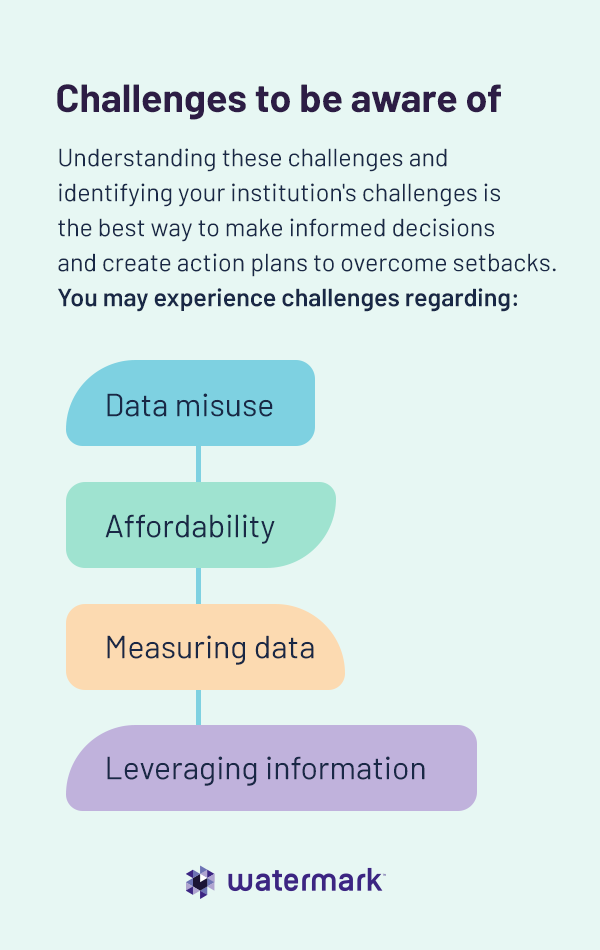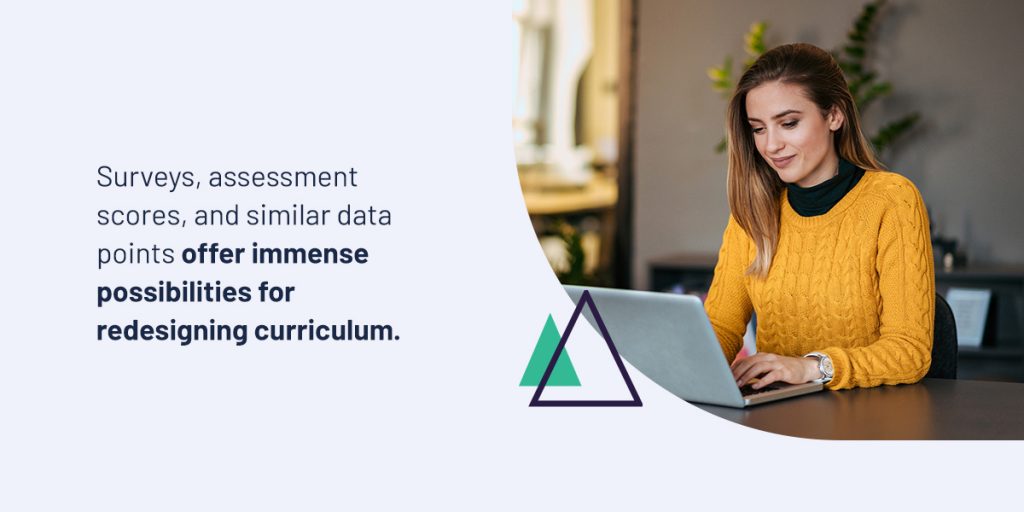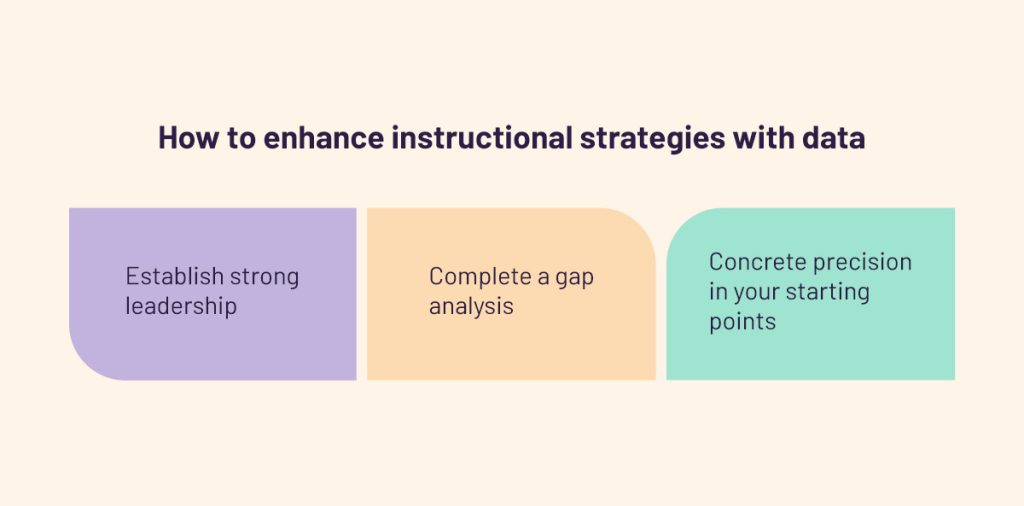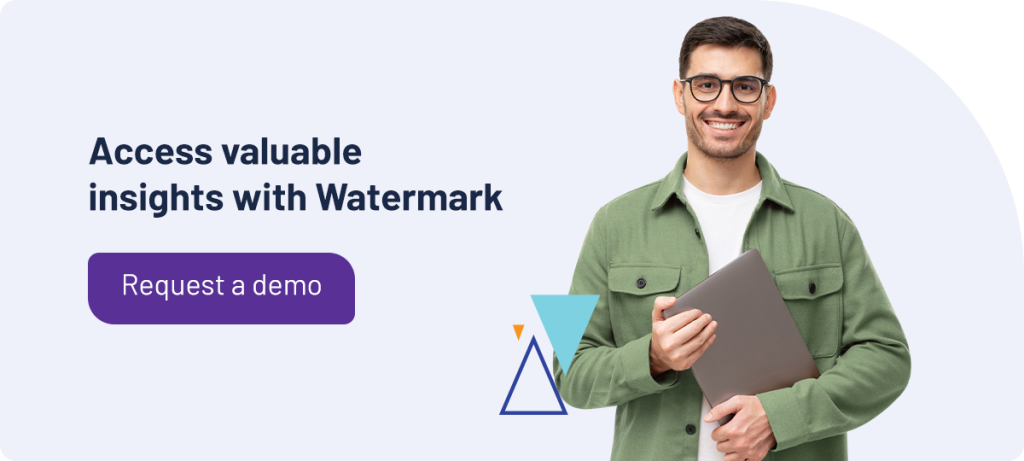



Analytics has become a growing hot topic in higher education. This information can aid decision-making and drive student success, resource allocation, faculty performance, and more. However, some educational institutions face challenges in gathering and using analytics. Data is only powerful when you know how to leverage it, making it essential to understand the resources, time, and technology you must dedicate to obtaining this information. Although higher education institutions are collecting more data now than ever before, using this information to drive change on campus is the only way to make analytics useful.
Here, you can learn more about analytics, including what areas to target, challenges to be aware of, and how you can improve faculty performance with your insights.
Understanding analytics is the first step to effectively leveraging this information. Analytics relate to nearly every facet of your institution, and they span beyond simple metrics. Rather, this term often refers to the data collection and solution creation process and involves using predictive models, statistical analysis, and explanatory models to gain insights for acting on complex issues. When you understand analytics and how to leverage them, you can drive change, such as creating early intervention strategies, improving educational programs, and boosting student success and graduation rates.
Analytics often start with a central strategic question that relates to a problem you aim to identify or solve and provides a foundation for collecting data to support your objectives. When you evaluate your analytics, you must look beyond the facts and figures directly in front of you. You must make predictions according to current trends, present actionable findings, and create new questions to support your central foundation. You will likely need to create several custom reports to gather a comprehensive view of the situation and need to pull additional resources and team members to form an effective strategy for tackling those tasks.
There are several benefits to using analytics effectively, and many outcomes support multiple initiatives. For example, improving faculty performance can boost student performance. Depending on how you use your data, you can experience benefits like reducing costs, lessening faculty workloads, increasing enrollment and retention, and more. Consider leveraging your data to understand and aid in:
Although you can leverage analytics across departments, having a clear focus is essential when obtaining data. If you collect an abundance of unrelated information, you may encounter challenges when trying to identify patterns and create comprehensive and actionable solutions. Evaluate your institution’s current pain points to determine where to focus. You can leverage analytics to target an array of facets:

Like any data set or process, data analysis has several challenges. Understanding these challenges and identifying your institution’s challenges is the best way to make informed decisions and create action plans to overcome setbacks. You may experience challenges regarding:
Analyzing student performance data, assessments, evaluations, and other forms of data analytics can provide a deep insight into classroom improvement opportunities. Data analytics can empower instructors to align their instructional strategies with curriculum maps and objectives to meet student needs. Regular monitoring and tracking will be essential for determining which strategies are most beneficial for your institution. Generally, here’s how your faculty can improve performance with data analytics:
Historical data can depict current student skills and where comprehension breakdowns occur within a class or program. This information can showcase opportunities for additional student support and highlight progress rates for students across departments. Instructors can use this data to create a comprehensive course roadmap detailing subsequent lessons and content.
Using this information can also make the curriculum mapping process easier and better align instructional strategies with institutional goals. Instructors can test these methods by administering evaluations and assessments to gather qualitative and quantitative information. Using Outcomes Assessment Projects, your faculty can tighten accreditation standards and drive improvement. A combination of tests, essays, course assignments, and feedback opportunities can reflect learning progress and empower students to vocalize which methods they most enjoy and which need redesigning.

Data is critical for developing new and innovative lessons. Surveys, assessment scores, and similar data points offer immense possibilities for redesigning curriculum to heighten student interest and align instructional methods with student and institutional goals.
Students can express what they enjoyed and where they faced challenges through feedback, and instructors can identify where they may need to dedicate more time to a topic through formative assessments and assignments. Over the following few learning periods or semesters, instructors can reflect on student scores and feedback to determine whether the new methods are improving student engagement and success or if they need to revamp their strategies.
Additionally, instructors can use this data to make comprehensive programs. Faculty can use academic data to determine which skills students have already learned and which they still need to obtain. This process can enhance faculty collaboration while lighting the way for a meaningful academic program that expands on previous knowledge rather than relaying the same information course after course or making significant jumps students are not prepared to face.
Data analytics can support personalized learning, which can boost student engagement and success. Analyzing student data can help you identify and engage with at-risk students using various intervention methods to get them back on track.
Advanced technologies can monitor trends in real-time and alert you when a student is veering off-course. This predictive data empowers faculty to reach out to students before they’ve fallen too far behind. Instructors can schedule meetings with these students and offer helpful resources to support the student’s learning.
This information can also measure student engagement by tracking participation, interaction, and task completion. Leveraging this data can empower instructors to adjust their teaching strategies to foster a positive learning environment and maximize student engagement. Along with improving your student satisfaction levels, this strategy can also increase retention rates and boost student persistence at your institution.

Your faculty has the opportunity to directly impact student learning paths and outcomes by leveraging data. Implement these elements to enhance instructional strategies:
The power of data spans far beyond the use cases outlined here. You can also use faculty performance analytics data to:
Despite the importance of data analytics, many institutions limit data to reporting capabilities or view analytics as a replacement for reporting processes. While some overlap can exist between these facets, it’s important to recognize the differences when defining your processes. Your analytic efforts should ask strategic questions and aid in developing plans to answer these questions using powerful insights.
While reporting involves gathering and presenting data, analytics consists of using this data to inform decision-making. Reporting aids data analytics by providing the foundation for identifying trends but doesn’t address why trends are occurring or depict future solutions. Understanding this difference is vital for strengthening your analytics process and ensuring you invest in the proper tools and resources to make data analytics meaningful.
At Watermark, we empower higher education institutions to access critical insights and make long-lasting changes on campus by providing a central hub for collaboration, accessing and sharing data, identifying trends, streamlining workloads, and more. We simplify data collection and empower teams to leverage advanced tools for enhanced decision-making and drive continuous improvement.
With Watermark Faculty Success, you capture a holistic view of faculty information and use critical insights to improve their performance and enhance instructional strategies. You can also leverage Faculty Success with our other solutions for a complete suite of advanced tools to access insights and drive change. We make it easier to maximize your impact on student retention and success and leverage data to build a more powerful curriculum.
We proudly serve higher education decision-makers and leaders, allowing us to be your one-stop shop for institutional change and success. Our solutions empower deans, provosts, and similar leaders to understand what’s happening on campus, in classrooms, and throughout institutional processes so they can capture a comprehensive picture and use data to form lasting solutions. See how our solutions work together by requesting a demo of our suite.































































































































































































































































































































































































Submit this form to schedule a meeting with one of our reps to learn more about our solutions. If you need customer support instead, click here.